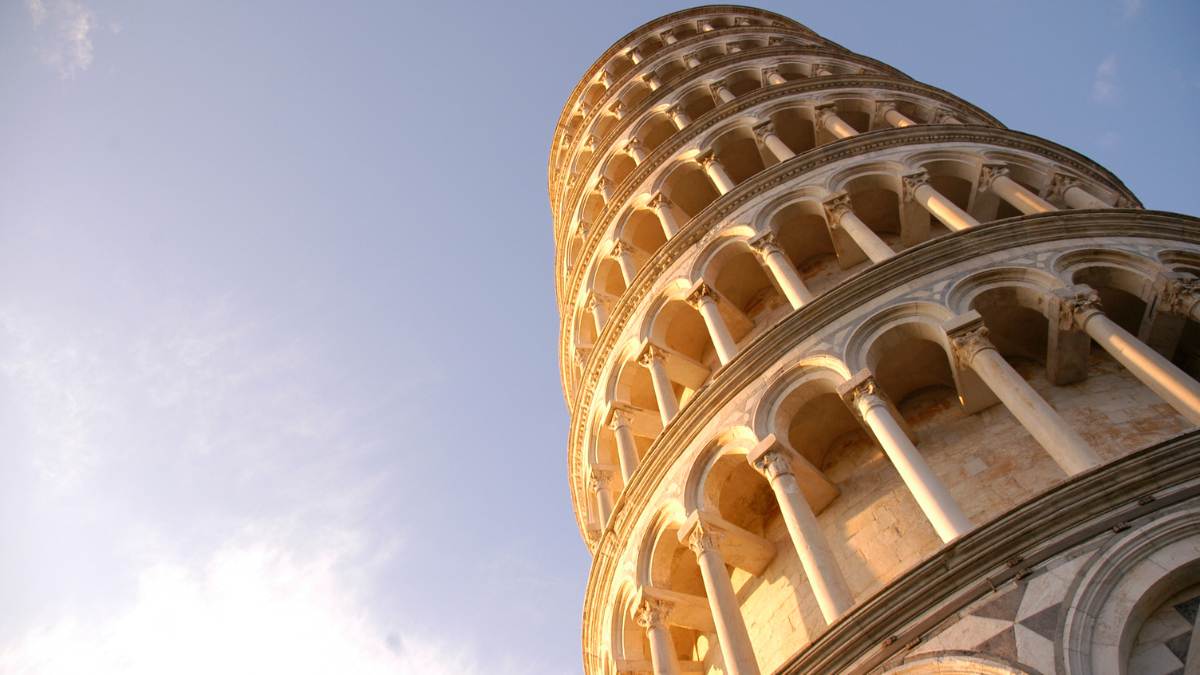The Leaning Tower of Pisa is one of the world's most recognizable architectural miracles, not for its height or grandeur, but for its remarkable and accidental inclination. Located in Pisa, Italy, this medieval bell tower began construction in 1173 and became a global symbol of both architectural beauty and engineering error. A part of Piazza dei Miracoli, a UNESCO World Heritage site, the tower bends due to unstable ground under its foundation - a defect was discovered immediately after the building began. Despite several challenges for centuries, including war, natural disasters, and misguided repairs, the Tower still stands as a favorite icon in Italy. Today, it attracts millions of visitors every year, surrounded by its unique inclination, rich history, and cultural importance.
Check Out: Louvre Museum: Check History, Significance and Interesting Facts
Who Built the Leaning Tower of Pisa?
The Leaning Tower of Pisa was built in about two centuries and included several architects. Construction began in 1173, and the project is usually attributed to Bonanno Pisano, a local architect whose name was later discovered on a piece of the structure.
However, some historians argue that the designer of the nearby Baptistery, Diotisalvi, may have been originally involved due to the similarity in the style. As the tower began to bend during the initial construction, due to soft, unstable ground, work was stopped for decades. Later, Giovanni Di Simone resumed the project in the 13th century and tried to fix the tilt by adjusting the upper floors.
The final phase, including Belfree, was completed by Tomaso de Andrea Pisano around 1372. The tower was commissioned as part of the PISA's Cathedral Complex and partially funded by Donna Burta Di Bernardo, a local widow who donated its foundation.
History of Leaning Tower of Pisa
Pisa has a long, storied past, dating to antiquity, in the Tuscan region of Italy. It was first settled by the Etruscans and became a Roman colony around 180 BC. This city developed because of its strategic location, both in relation to the coast and near the Arno River. During the early Middle Ages, PISA evolved into a powerful maritime republic, rivaling Venice and Genoa in naval strength and business.
Its golden era was between the 11th and 13th centuries when it expanded its impact in the Mediterranean Sea and formed prestigious structures such as the Pisa Cathedral and the Leaning Tower. However, Pisa's dominion fell after the military attack, chiefly the battle of Meloria (1284), against Genoa. It then was under the Florentine, and later Medi. Today, PISA is a city with landmarks of architectural buildings, especially for the tilted tower, and a university city rich in culture and history.
Interesting Facts About The Leaning Tower of Pisa

-
The Lean Was an Accident
-
The famous Lean of the Leaning Tower of Pisa was not by design. It began leaning shortly after construction started because of the soft ground and shallow foundation.
-
Construction Took Nearly 200 Years
-
It started construction in 1173 and was finished in 1372. The extended period of discontinuation in building, thanks to naturally occurring wars and political issues, happened to stabilize the building.
-
It Contained 8 Floors and 7 Bells
-
There are 8 stories in the tower, and the bell room has 7 bells - one for every note in the scale.
-
The Tilt Is About 4 Degrees
After major restoration efforts between 1990 and 2001, the lean was reduced from 5.5 degrees to about 4 degrees to prevent collapse. -
Galileo and the Tower
According to legend, Galileo Galilei conducted experiments on gravity by dropping objects from the tower, though this is debated. -
Mussolini Tried to Straighten It
Italian dictator Benito Mussolini considered the tilt embarrassing and ordered concrete injections to correct it, which made the lean worse. -
It Survived World War II
During WWII, German soldiers used the tower as a lookout. Allied forces considered destroying it but chose not to due to its historic significance.
Comments
All Comments (0)
Join the conversation